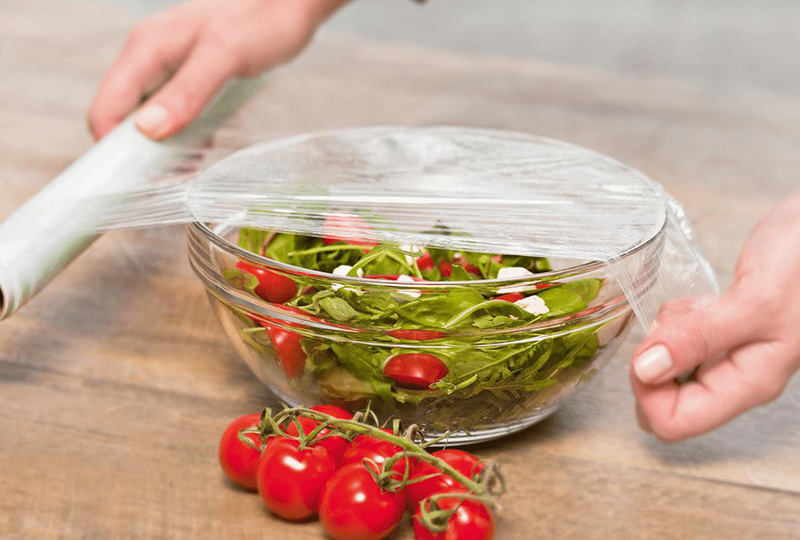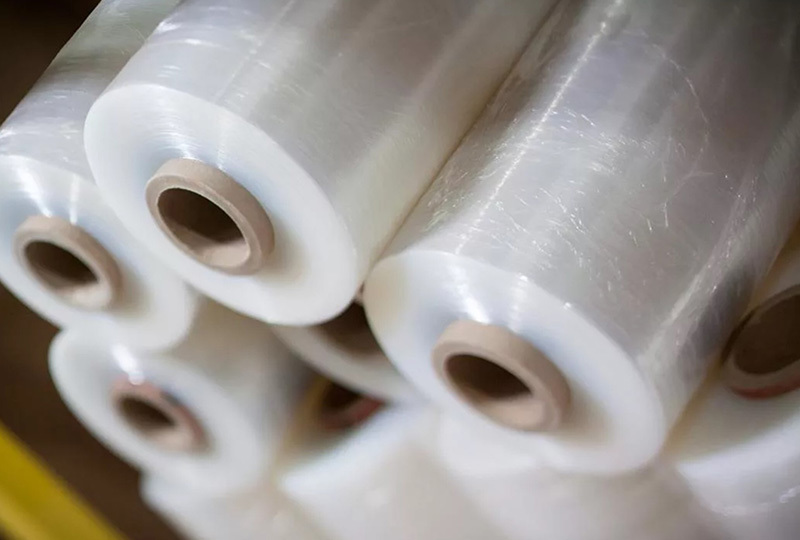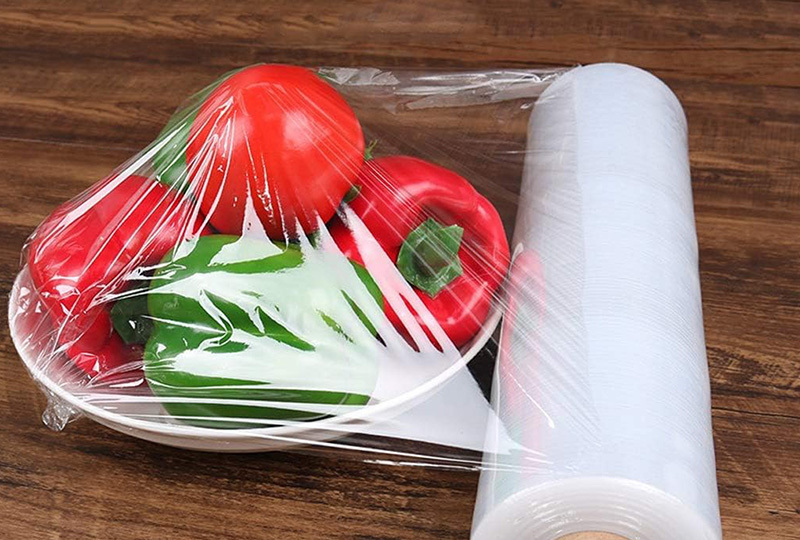Why Chefs Prefer Bio-Based Cling Film for Food Storage: A Sustainable Choice for Culinary Excellence
Release time:
Jun 02,2025
Why Chefs Prefer Bio-Based Cling Film for Food Storage: A Sustainable Choice for Culinary Excellence Table of Contents Introduction to Bio-Based Cling Film What is Bio-Based Cling Film? Advantages of Bio-Based Cling Film in Culinary Use 1. Environmental Benefits 2. Food Preservation and Safety 3. Durability and Performance 4. User-Friendliness and Versatility
Why Chefs Prefer Bio-Based Cling Film for Food Storage: A Sustainable Choice for Culinary Excellence
Table of Contents
- Introduction to Bio-Based Cling Film
- What is Bio-Based Cling Film?
- Advantages of Bio-Based Cling Film in Culinary Use
- 1. Environmental Benefits
- 2. Food Preservation and Safety
- 3. Durability and Performance
- 4. User-Friendliness and Versatility
- Chefs' Experiences with Bio-Based Cling Film
- Integrating Bio-Based Cling Film into Sustainable Kitchen Practices
- Frequently Asked Questions
- Conclusion
Introduction to Bio-Based Cling Film
In recent years, the culinary world has seen a significant shift towards sustainability, prompting chefs to reconsider their choices in food storage solutions. **Bio-based cling film**, made from renewable resources, has emerged as a top contender, offering a multitude of advantages over conventional plastic wraps. This article delves into why bio-based cling film is becoming the preferred choice among chefs, highlighting its benefits not just for food safety but also for the environment.
What is Bio-Based Cling Film?
Bio-based cling film is produced from natural materials, such as corn starch or sugarcane, as opposed to petroleum-based plastics. This innovative product is designed to provide the same functionality as traditional cling films while significantly reducing the environmental footprint associated with plastic waste. Moreover, bio-based cling film is often biodegradable or compostable, offering a sustainable alternative that aligns with the growing trend of eco-conscious culinary practices.
Advantages of Bio-Based Cling Film in Culinary Use
1. Environmental Benefits
The most compelling reason chefs are switching to bio-based cling film is its environmental impact. Traditional plastic wraps take centuries to decompose, contributing to landfills and ocean pollution. In contrast, bio-based cling films are designed to break down more quickly and reduce the reliance on fossil fuels. By choosing bio-based products, chefs play a critical role in fostering a sustainable food system and minimizing their carbon footprint. This commitment to environmental responsibility resonates well with consumers who prioritize sustainability in their purchasing decisions.
2. Food Preservation and Safety
Another crucial aspect of food storage is maintaining freshness and preventing spoilage. Bio-based cling film excels in this area, offering excellent barrier properties against moisture and air. This capability ensures that food items remain fresh for longer periods, which is essential for chefs who aim to reduce waste and optimize their ingredient usage. Furthermore, many bio-based cling films are free from harmful chemicals such as BPA, making them a safer choice for food storage.
3. Durability and Performance
Despite being made from natural materials, bio-based cling films do not compromise on performance. They are engineered to provide the same stretch and cling as traditional plastic wraps, ensuring that they adhere well to various surfaces, including bowls, pans, and containers. Chefs appreciate this versatility, as it allows them to use bio-based cling film for a wide range of food storage needs—whether wrapping sandwiches for service or covering leftovers.
4. User-Friendliness and Versatility
Bio-based cling film is not only effective but also user-friendly. It typically comes in easy-to-use rolls, making it simple for chefs to cut the desired length and wrap their food items securely. Additionally, many brands offer various thicknesses and designs tailored to different applications, enhancing usability in a busy kitchen environment. This adaptability allows chefs to seamlessly integrate bio-based cling film into their daily operations.
Chefs' Experiences with Bio-Based Cling Film
Many chefs who have transitioned to using bio-based cling film share positive experiences that highlight its benefits. For instance, Chef Maria Degli Esposti of a renowned Italian restaurant notes how she has significantly reduced food waste in her kitchen since adopting bio-based cling film. “I used to throw away so much food that had spoiled due to inadequate storage,” she explains. “Since switching, our leftovers stay fresh longer, and I feel good knowing I'm making a more sustainable choice.”
Similarly, Chef Leo Zhang emphasizes the importance of safety and sustainability in his Michelin-starred establishment. “Our clientele is increasingly aware of environmental issues, and they appreciate when we use sustainable practices,” he remarks. “Bio-based cling film not only helps us maintain food quality but also aligns with our eco-friendly ethos.”
Integrating Bio-Based Cling Film into Sustainable Kitchen Practices
To maximize the benefits of bio-based cling film, chefs can incorporate it into broader sustainable kitchen practices. Here are some strategies to consider:
1. Waste Reduction Initiatives
Implementing waste reduction strategies in the kitchen can further enhance the advantages of bio-based cling film. By properly storing ingredients and leftovers, chefs can limit food waste, which is a significant contributor to greenhouse gas emissions.
2. Sourcing Local Ingredients
Pairing bio-based cling film with locally sourced ingredients supports a sustainable food system. This practice reduces transportation emissions and promotes regional economies, contributing to a more holistic approach to sustainability.
3. Educating Staff
Training kitchen staff on the benefits and proper usage of bio-based cling film can ensure that everyone is on the same page regarding sustainable practices. When all team members understand the importance of reducing plastic waste, it fosters a culture of responsibility in the kitchen.
4. Promoting Sustainability to Customers
Chefs can take the opportunity to promote their use of bio-based cling film to customers. Highlighting this sustainable choice on menus or through social media can enhance a restaurant's brand image and attract environmentally conscious diners.
Frequently Asked Questions
1. What is the difference between bio-based cling film and traditional plastic wrap?
Bio-based cling film is made from renewable resources, while traditional plastic wrap is derived from petroleum-based products. Bio-based options are often biodegradable or compostable, making them more environmentally friendly.
2. How should bio-based cling film be stored?
Bio-based cling film should be stored in a cool, dry place away from direct sunlight to maintain its integrity and performance.
3. Can bio-based cling film be used in the microwave?
Many bio-based cling films are microwave-safe, but it is essential to check the manufacturer's guidelines to ensure safe usage.
4. Is bio-based cling film more expensive than traditional plastic wrap?
While bio-based cling film may have a higher upfront cost, the long-term environmental benefits and reduced food waste can offset the price difference.
5. How can I ensure I am using the right bio-based cling film for my kitchen needs?
Consider the specific applications you will use the cling film for, such as wrapping, covering, or freezing, and choose a product that meets those needs, ensuring it is certified as biodegradable or compostable if that aligns with your sustainability goals.
Conclusion
Chefs are increasingly turning to **bio-based cling film** as a sustainable solution for food storage, driven by its environmental benefits, food preservation capabilities, and strong performance characteristics. By integrating this innovative product into their culinary practices, chefs not only enhance food safety but also contribute to a more sustainable food system. The growing demand for eco-friendly products in the culinary world signifies a promising shift towards a greener future. Embracing bio-based cling film is not just a trend; it is a commitment to quality, sustainability, and responsibility in the kitchen.
Related News
What are the characteristics of PVC fresh-keeping film for food preservation
Can PVC plastic wrap be heated in a microwave oven?
What is the difference between PVC cling film and PE cling film
The choice of PVC cling film need to pay attention to what






